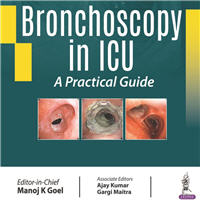Tag: bronchoscopy
Bronchoscopy in ICU: A Practical Guide
This practical guide focuses on Bronchoscopy in ICU. Bronchoscopy is one of the most commonly performed medical procedures, but is limited to the practice of a handful chest physicians and surgeons. The field of bronchoscopy... read more

To Bronch or Not to Bronch – That Is the Question
Percutaneous tracheostomy was safely and effectively performed by an experienced surgical team both with and without bronchoscopic guidance with no difference in the complication rates. This study suggests that the use... read more
Single-use Endoscopy
Endoscopy is used in a variety of medical specialties ranging from gastroenterology to urology, cardiology and critical care. Traditionally, health systems have invested in reusable endoscopy equipment, but an industrywide... read more
Comparison of outcomes between vertical and transverse skin incisions in percutaneous tracheostomy for critically ill patients
This retrospective study showed that transverse skin incisions in PTs for critically ill patients, resulted in a significant decrease in overall complications, particularly ulcers in the tracheostomy site. Of the 458... read more
Why Most Diagnostic Procedures Aren’t Beneficial
We often assume that diagnostic procedures will help patients. A lot of training goes into learning how to do these procedures. Procedures are dramatic. We like performing them. Patients are impressed, perceiving that we... read more
High Flow Nasal Oxygen for Acute Bronchiolitis?
Since bronchiolitis is a clinical diagnosis, there is no test, including viral testing and radiography, which rules it in or out (Schuh et al 2007). Sadly, despite multiple guidelines (NICE, AAP, CPS), there has also been... read more
Trach Travails: Need-to-Know ED Tricks for Airway Emergencies in Tracheostomy Patients
The outside hospital emergency physician passed a bougie through the patient’s existing metal trach and exchanged the metal trach for a 6-0 endotracheal tube. After the exchange, the ETT cuff was inflated, and the patient... read more









